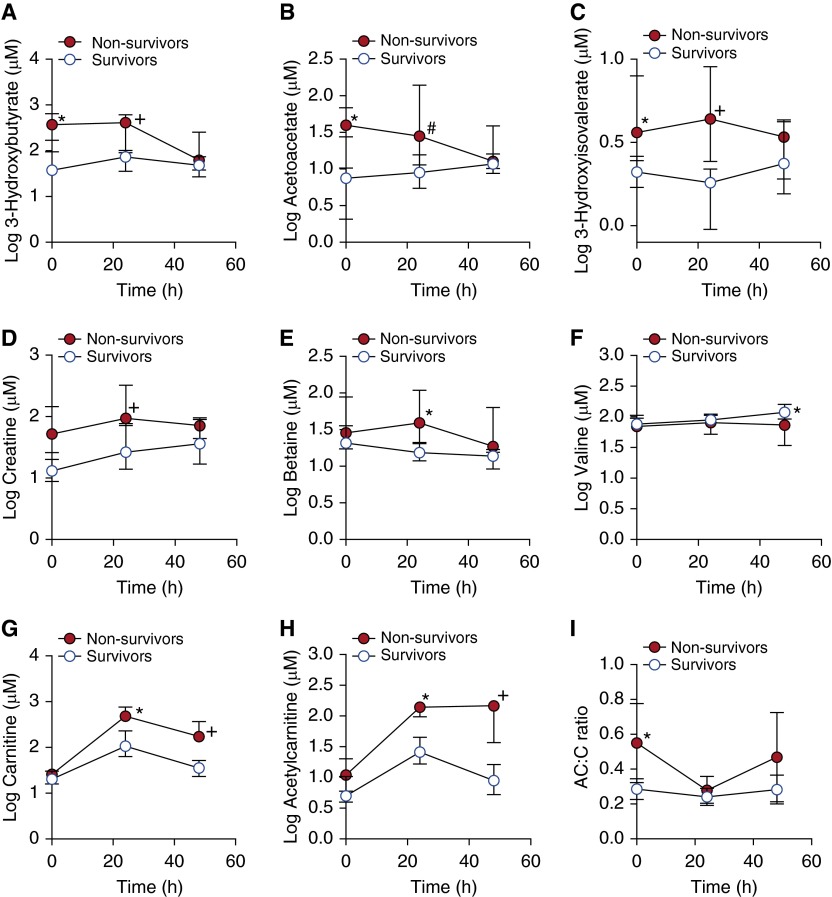Figure 3.
Metabolite profiles were different in l-carnitine-treated survivors and nonsurvivors. The ketone bodies (A) 3-hydroxybutyrate and (B) acetoacetate were higher at T0 (before treatment) and T24 (24 [±4] h after treatment) in nonsurvivors (*P < 0.001, +P = 0.065, and #P = 0.019). The metabolites (C) 3-hydroxyisovalerate (*P < 0.001, +P = 0.005) and (D) creatine (+P = 0.0496) were also elevated in nonsurvivors at T24 compared with survivors. (E) Betaine (*P = 0.005) was higher at T24 and (F) valine was higher (*P = 0.031) at T48 (48 [±4] h after treatment) in survivors. Notably, both (G) carnitine (*P = 0.001, +P < 0.001) and (H) acetylcarnitine (*P = 0.004, +P = 0.001) were increased in nonsurvivors, suggesting differences in l-carnitine metabolism between the two groups. (I) The acetylcarnitine–carnitine (AC:C) ratio, an indicator of carnitine homeostasis, was higher at T0 (*P = 0.001) and more variable over time in nonsurvivors compared with survivors, suggesting a greater disturbance in carnitine metabolism. There were no differences in the T0 concentrations of betaine, valine, carnitine, or acetylcarnitine between survivors and nonsurvivors. Data represent medians ± the interquartile range of seven or eight patients per group.

